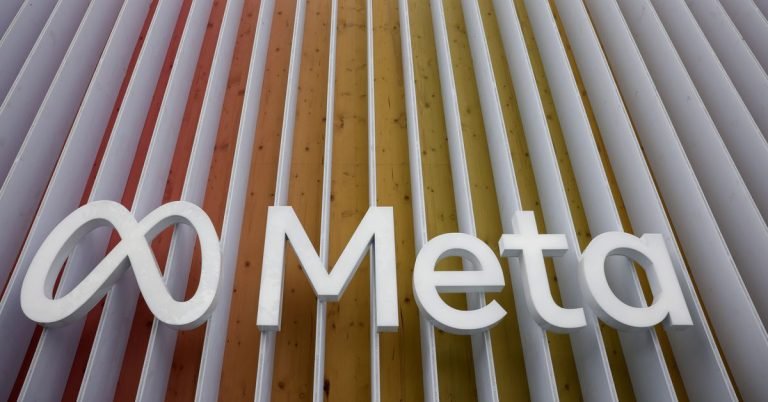
Part of the Future of Work issue of The Highlight, our home for ambitious stories that explain our world.
“I don’t have goals. I don’t have ambition. I only want to be attractive.” This apathetic declaration is the start of a TikTok rant that went viral for its blatant message: to reject hard work and indulge in leisure. Thousands of young people have since remixed the sound on the app, providing commentary about their post-college plans, dream jobs, or ideal lifestyles as stay-at-home spouses.
Over the past two years, young millennials and members of Gen Z have created an abundance of memes and pithy commentary about their generational disillusionment toward work. The jokes, which correspond with the rise of anti-work ideology online, range from shallow and shameless (“Rich housewife is the goal”) to candid and pessimistic.
“I don’t want to be a girlboss. I don’t want to hustle,” declaimed another TikTok user. “I simply want to live my life slowly and lay down in a bed of moss with my lover and enjoy the rest of my existence reading books, creating art, and loving myself and the people in my life.”
Many have taken to declaring how they don’t have dream jobs since they “don’t dream of labor.” This buzzy phrase, popularized on social media in the pandemic, rejects work as a basis for identity, framing it instead as an act to pursue out of financial necessity. To quote the billionaire Kim Kardashian, it does seem like nobody wants to work these days. Nobody wants to work in jobs where they are underpaid, underappreciated, and overworked — especially not young people.
The reality is much more complicated. American workers across various ages, industries, and income brackets have experienced heightened levels of fatigue, burnout, and general dissatisfaction toward their jobs since the pandemic’s start. The difference is, more young people are airing these indignations and jaded attitudes on the internet, often to viral acclaim.
Today’s young people are not the first to experience economic hardship, but they are the first to broadcast their struggles in ways that, just a decade ago, might alienate potential employers or be deemed too radical. Such attitudes might abate with age, but the Great Resignation has inspired a generation of workers to speak critically — and cynically — about the role of labor in their lives. As a result, zoomers (and millennials, to an extent) have been touted, perhaps undeservedly, as beacons of anti-capitalism and pivotal figures in the nationwide quitting spree.
Activists are hopeful that the current pro-worker momentum can be harnessed into legislative or union-based gains. Still, it’s too early to tell whether this brazen anti-work ethos can effectively support and fuel labor organizing. America’s youngest workers, who have a lifetime’s worth of labor ahead of them, are not afraid to publicly quit their jobs or put employers on blast. But will these virtual acts of employee resistance culminate in lasting systemic change?
Business Insider recently cited data claiming that emboldened Gen Z workers were more “likely to change jobs more often than any other generation,” and a recent Bloomberg poll found that millennials, followed by zoomers, are the most likely to leave their current position for a higher salary.
Generational stereotypes and categorizations, for better or for worse, have pervaded our perception of American work culture and the workplace. These age-based categorizations are usually reductive, and exclude key factors like education level, social class, race, and gender in their analyses. Still, they do offer a revealing read into the ambitions and aspirations of the country’s youngest workers, regardless of whether they’re actively leaving their jobs.
While it’s certainly easy to group workers by age, more emphasis should be placed on when people enter the workforce, the coinciding state of the economy, and the various safety net programs in place, said Sarah Damaske, an associate professor of sociology and labor and employment relations at Penn State University.
“It’s not necessarily that different generations hold different attitudes about work,” Damaske argued. “For millennials and for some members of Gen Z, they’ve witnessed two recessions, back-to-back. This is a very different labor market experience than what their parents and grandparents encountered.”
Many zoomers entered the workforce during the pandemic-affected economy, amid years of stagnant wages and, more recently, rising inflation. “My dad got a job straight out of high school, saved up, and bought a house in his 20s,” said Anne Dakota, a 21-year-old receptionist from Asheville, North Carolina, who earns minimum wage. “I don’t even think that’s possible for me, at least with the current money I make.”
For decades, if not centuries, this was not the case. Work has been — and continues to be — a major aspect of the American identity. “Most people identify themselves as workers,” said Damaske. “It’s an identity that adults willingly take on.”
The pandemic changed that for everyone, not just the youngest workers. In addition to reassessing their relationship to work, people are reflecting upon their greater life purpose. One human resources manager called it the “Great Reflection,” wherein people are “taking stock of what they want out of a job, what they want out of employment, and what they want out of their life.” More often than not, workers are not content with labor that is unsatisfying, low-paying, and potentially harmful. And Gen Z has not been shy about detailing these expectations to employers and on social media.
“I think people are realizing that we just want better for ourselves,” said Jade Carson, 22, a content creator who shares career advice for Gen Z. “I want to be in a role where I can grow professionally and personally. I don’t want to be stressed, depressed, or always waiting to clock out.”
On TikTok, Carson has shared tips on negotiating salary, potential employer red flags to be wary of, and her workplace non-negotiables. Her goal is to help job applicants realize that they should not be afraid to ask for what they deserve, even if most of her audience is currently at the bottom of the career ladder. “Even with internships, I only promote paid opportunities,” Carson said. “There’s so much valuable free knowledge out there. More people are realizing that they can make career moves or requests they otherwise didn’t think they could.”
In some cases, workers are quitting without anything lined up. It’s a common rallying cry on #QuitTok, where users endorse and applaud those who’ve left demoralizing jobs.
“I’m here to tell you that you also have permission to quit a job that makes you miserable,” said one 28-year-old TikToker, who recently left teaching.
This was the case for Nikki Phillips, 27, who resigned from her role in warehousing and fulfillment services in October, after months of dealing with “a toxic work environment.” Though some of her work can be done remotely, Phillips was required to be in the office full time, and eventually she contracted Covid-19 (she was fully vaccinated). The final straw, she said, was when her boss made her feel guilty for being out sick. “Life is about so much more than working yourself to death,” Phillips said. “I don’t want to keep working 40 hours a week, coming home only to have four hours a night to spend with my kids and boyfriend, and do it all again the next day.”
Phillips, a self-described “struggling zillennial,” is a single mother of two who dropped out of community college to start working in her early 20s. She didn’t expect to leave her old job with nothing lined up, but the experience took “such a drastic toll on [her] happiness” that she felt better walking away: “My mental health and my happiness matters more than my salary, but at the same time, I can’t afford to not have a job because I’ve got bills to pay and two kids to support.” And it empowered her to know that so many workers seemed to be doing the same.
Phillips’s predicament is reflective of most working-class employees, according to Damaske, who don’t have the financial means to stop working for a protracted period of time. As a job seeker without a college degree, Phillips said she struggles to be considered for well-paying opportunities, even in roles she has experience in. Still, she’d rather take a lesser-paying job that allows her to work from home with respectful managers over a well-paid position with little flexibility and a poor work culture. “I want to work with people who understand that I’m a human being and don’t expect me to be a corporate slave,” Phillips said.
While younger workers have developed a reputation for “job hopping,” Damaske believes employers are also to blame. “We really have seen an erosion in the employer-employee contract over the last 40 years,” she said. “Why are young people being asked to make commitments to employers who no longer uphold their end of the bargain? Young workers don’t get to work for a company until they retire. Those kinds of practices don’t happen anymore.”
Employers have grown increasingly comfortable laying off employees as a cost-cutting measure, while simultaneously relying more on temporary workers and contractors. Many culled their ranks during the pandemic, so remaining employees often have to take on more job responsibilities and hours. That hadn’t always been the case, according to Damaske. This varies by company, but junior workers are often the easiest to let go. (Research has also found that ethnic minorities and older employees are at higher risk of layoffs, compared to younger, white workers.)
Regardless, many young employees, especially those who’ve entered the workforce during the past two recessions, have internalized this job insecurity and might be more eager to jump ship if a better offer arises. According to a 2019 Harris poll, workers under 35 expressed more “layoff anxiety” than their older counterparts. Many, as a result, don’t develop a work identity that is tied to their employer or their current field of work. In fact, more Americans than ever are looking to start their own businesses, and low-paying workers are trying to pivot to higher-paying industries.
“A lot of young people are looking out for themselves, whether that means building a personal brand or finding a job that works best for their lifestyle,” said Carson. “There are so many online resources on social media, even LinkedIn, with people providing so much free career knowledge, like offering to look over resumés and even providing personal referrals.”
Carson doesn’t think that most zoomers are actually anti-work, at least from a political perspective. In fact, she said, she thinks it’s the opposite: She has noticed more young people publicly committing to quit an undesirable job so that they can devote more time to learning new skills, in the hopes of entering a field like tech, which boasts high salaries and good benefits. Many have also left behind corporate roles to work as full-time content creators or freelancers.
“I see a lot of content about people leaving their retail job to try and break into tech,” Carson said. “They’re quitting their job so they can prepare to find a better job.”
What comes after #QuitTok, though, is mostly still work. There is work in figuring out how to pay next month’s rent and qualify for health insurance. Some users make retrospective videos, detailing how their lives have changed since quitting a toxic or unsatisfying job. Others document their attempts to switch into an ideal role or industry, which can veer into hustle culture. Instead of emphasizing leisure and personal fulfillment outside of work, these videos lean into a different kind of work identity. The #breakintotech TikTok trend, for example, has been criticized for romanticizing the benefits of a tech job without diving into its realities: long hours, heavy workload, and how developing certain skills, qualifications, and connections can’t be done overnight.
Young people understand that they have to labor for their livelihoods, but many, like Phillips and Dakota, believe the existing system has set them up to fail. Bleak economic circumstances — exacerbated by crushing student loan debt, growing wealth inequality, and wage stagnation — have soured their perceptions of capitalism. As a result, the generation has adopted more anti-capitalist language to express these discontents.
There is a dissonance, however, between these aggrieved attitudes and the political action necessary to implement change.
The country’s youngest workers might be the most zealously vocal online about how labor can be soul-crushingly exploitative and mentally taxing, but they are, after all, only newcomers to the workforce. They might have greater sway in some corporate environments by being upfront about health benefits and remote work flexibility, but these individualized wins have yet to fully diffuse across the workforce — to affect change offline.
American workers currently have significant leverage to demand better conditions and benefits. Employers might still hold a lot of power, but swaths of employees are organizing through unions to better the terms and conditions of their employment. Across the country, workers at Amazon, Chipotle, McDonald’s, and Starbucks have petitioned to unionize.
Zoomers are a part of this pro-labor wave, but so far, the age cohort’s official participation appears modest. Workers between the ages of 16 and 24 have the lowest union membership rate, according to a 2022 Bureau of Labor Statistics report. It’s likely that fewer young people are being hired into unionized roles, given how union membership has significantly declined since the 1980s.
“Most people my age don’t have a clear idea of what a union is and don’t often ask about it when we’re hired,” said Dakota, the 21-year-old Asheville receptionist.
Many believe the internet is a useful tool in shifting public opinion, and digital spaces are where young people are first introduced to more progressive ideas. The nonprofit Gen-Z For Change, for example, has over 500 young creators consistently producing progressive content, some of which have highlighted the various unionization efforts across the country. The organization relies on grassroots tactics to draw attention to causes through public-facing creators, who each have their own independent base of followers. Most aren’t afraid to engage with comments (and critics) directly, and their videos often highlight digital organizing strategies that viewers can participate in. For example, members of Gen-Z For Change created a website and tool that can send fake job applications to union-busting Starbucks locations.
Some creators have claimed that explicitly political or pro-labor TikToks are often placed under review, which means they’re likely to receive less traction than more apolitical QuitToks. Still, this content is often a scroll or a click away, and digital organizers are hopeful that social media can be harnessed to affect real change.
Dakota felt like she was initially misinformed about why people didn’t want to work, until she spent more time reading up on labor unions and worker testimonies. “It’s not about people not working,” she said. “It’s about not settling for a job that diminishes their quality of life. I’m lucky to have realized that early on.”
Terry Nguyen is a reporter for Vox covering consumer and internet trends, and technology that influences people’s online lives.






